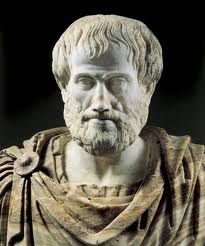Premature Commitment. It’s a Guy Thing.
There’s a widespread meme in American culture that guys are not good at making commitments. While that may be true in romance, it seems that the opposite — premature commitment — is a much bigger problem in business.
That’s the opinion I’ve formed from reading Paul Nutt’s book, Why Decisions Fail. Nutt analyzes 15 debacles which he defines as “… costly decisions that went very wrong and became public…” Indeed, some of the debacles — the Ford Pinto, Nestlé infant formula, Shell Oil’s Brent Spar disposal — not only went public but created firestorms of indignation.
While each debacle had its own special set of circumstances, each also had one common feature: premature commitment. Decision makers were looking for ideas, found one that seemed to work, latched on to it, pursued it, and ignored other equally valid alternatives. Nutt doesn’t use the terminology, but in critical thinking circles this is known as satisficing or temporizing.
Here are two examples from Nutt’s book:
Ohio State University and Big Science — OSU wanted to improve its offerings (and its reputation) in Big Science. At the same time, professors in the university’s astronomy department were campaigning for a new observatory. The university’s administrators latched on to the observatory idea and pursued it, to the exclusion of other ideas. It turns out that Ohio is not a great place to build an observatory. On the other hand, Arizona is. As the idea developed, it became an OSU project to build an observatory in Arizona. Not surprisingly, the Ohio legislature asked why Ohio taxes were being spent in Arizona. It went downhill from there.
EuroDisney — Disney had opened very successful theme parks in Anaheim, Orlando, and Tokyo and sought to replicate their success in Europe. Though they considered some 200 sites, they quickly narrowed the list to the Paris area. Disney executives let it be known that it had always been “Walt’s dream” to build near Paris. Disney pursued the dream rather than closely studying the local situation. For instance, they had generated hotel revenues in their other parks. Why wouldn’t they do the same in Paris? Well… because Paris already had lots of hotel rooms and an excellent public transportation system. So, visitors saw EuroDisney as a day trip, not an overnight destination. Disney officials might have taken fair warning from an early press conference in Paris featuring their CEO, Michael Eisner. He was pelted with French cheese.
In both these cases — and all the other cases cited by Nutt — executives rushed to judgment. As Nutt points out, they then compounded their error by misusing their resources. Instead of using resources to identify and evaluate alternatives, they invested their money and energy in studies designed to justify the alternative they had already selected.
So, what to do? When approaching a major decision, don’t satsifice. Don’t take the first idea that comes along, no matter how attractive it is. Rather, take a step back. (I often do this literally — it does affect your thinking). Ask the bigger question — What’s the best way to improve Big Science at OSU? — rather than the narrower question — What’s the best way to build a telescope?
Computers Are Useless. They Only Give You Answers.
 I’ve worked with some highly creative people during my career. I’ve also worked with very insightful thinkers, both in business and in academia. Oftentimes, the two skills overlap: creative people are also insightful thinkers and vice-versa. I’ve often wondered if creativity leads to insight or if insight leads to creativity. Lately, I’ve been thinking that there’s a third factor that produces both — the ability to ask useful questions.
I’ve worked with some highly creative people during my career. I’ve also worked with very insightful thinkers, both in business and in academia. Oftentimes, the two skills overlap: creative people are also insightful thinkers and vice-versa. I’ve often wondered if creativity leads to insight or if insight leads to creativity. Lately, I’ve been thinking that there’s a third factor that produces both — the ability to ask useful questions.
Indeed, the title of today’s post is a quote from Pablo Picasso, who seemed both creative and insightful. His point — computers don’t help you ask questions … and questions are much more valuable than answers.
So, how do you ask good questions? Here are some tips from my experience augmented with suggestions by Shane Snow, Gary Lockwood, Penelope Trunk, and Peter Wood.
It’s not about you — too often, we ask long-winded questions designed to show our own knowledge and erudition. The point of asking a question is to gather information and insight. Be brief and don’t lead the witness.
You can contribute to a better answer — even if you ask a great question, you may not get a great answer. The response may wander both in time and logic, looping forward and backward. You can help the respondent by asking brief, clarifying questions. Don’t worry too much about interrupting; your respondent will likely appreciate your help.
Remember your who, what, where, when, how … and sometimes why — these words introduce open-ended questions that often result in more information and deeper insights. Be careful with why. Your respondent may become defensive.
Don’t go too narrow too soon — decision theory has a concept called premature commitment. We see a potential solution and start to pursue it while ignoring equally valid alternatives. It can happen in your questions as well. Start with broad questions to uncover all the alternatives. Then decide which one(s) to pursue.
Dumb questions are often the best — asking an (open-ended) question whose answer may seem obvious often uncovers unexpected insights. Even if you’re well versed in a subject, don’t assume you know the answer from the respondent’s perspective. He or she may have insights you know nothing about.
Be aware of your ambiguities — even simple, seemingly straightforward questions can be ambiguous. Your respondent may answer one question when you intended another. Here’s a simple example: what’s the tallest mountain in the world? There are two “correct” answers: Mt. Everest (if you measure from sea level) or Chimborazo (if you measure from the center of the earth). Which question is your respondent answering?
Think of parallel questions — I’m reading a Kinsey Millhone detective novel (U is for Undertow). One of the important questions Kinsey asks herself is, “why were the teenage boys burying a dog?” It gets her nowhere. But a slight tweak to the question — “Why were the boys burying a dog there?” — provides the insight that solves the mystery. (Reading detective novels is a good way to learn questioning techniques).
Clarify your terms — my sister is an entomologist. She knows that there’s a difference between a bug and an insect. I use the terms more or less interchangeably. If I ask her a question about bugs, she’ll answer it in the technical sense even though I mean it in the colloquial sense. We’re using the same word with two different meanings. It’s a good idea to ask, “When you talk about bugs, what do you mean?”
Think about how you answer questions — when you respond to questions, observe which ones are annoying and which ones lead to interesting insights. Stockpile the interesting ones for your own use.
Silence is golden — when speaking on the radio, I might say “over” to indicate that I’m finished speaking and it’s your turn. In normal conversation, we use body language and tone-of-voice to make the same transfer. Breaking the expected etiquette can lead to interesting insights. You ask a question. The respondent answers and turns it back to you. You remain silent. There’s an awkward pause and, often, the respondent continues the answer … in a less rehearsed and less controlled manner. Interesting tidbits may just spill out.
Don’t be too clever — Peter Wood probably says it best, “A few people have a gift for witty, memorable questions. You probably aren’t one of them. It doesn’t matter. A concise, clear question is an important contribution in its own right”.
Aristotle, HBR, and Me
I love it when the Harvard Business Review agrees with me. A recent HBR blog post by Scott Edinger focuses on, “Three Elements of Great Communication, According to Aristotle“. The three are: ethos, logos, and pathos.
Ethos answers the questions: Are you credible? Why should I trust your recommendations? Logos is the logic of your argument. Is it factual? Do you have the evidence to back it up? (Interestingly, the more ethos you have,the less evidence you need to back up your logos. People will trust that you’re credible). Pathos is your ability to connect emotionally with your audience. If you have high credibility and impeccable logic, your audience might conclude that you could take advantage of them. Pathos reassures them that you won’t — your audience knows that you’re a good citizen.
When I teach people the arts of public speaking, I generally recommend that they start by establishing their credibility (ethos). The trick is to do this without overdoing it. If you come across as a braggart, you reduce your credibility rather than burnishing it. A good tip to remember is to use the word, “we” rather than “I”. “We” implies teamwork; “I” implies an egocentric psychopath.
After establishing your credibility, you proceed to the logic (logos) of your argument. What is it that you’re recommending and why do you think it’s a good solution for the audience’s needs? It’s often a good idea to start by defining the audience’s needs. Then you can fit the recommendation to the need. Keep it simple and use stories. Nobody remembers abstract logic and difficult technical concepts. They do remember stories.
Think about pathos both before the speech and in the conclusion. Ideally, you can meet the audience before your speech, ask insightful questions, and make personal connections. The more you can talk to members of the audience before the speech, the better off you’ll be. Look for anecdotes that you can use in your speech — that also builds your credibility. If nothing else, spend the last few minutes before your speech shaking hands with audience members and thanking them for coming to your speech. At the end of your speech, you can return to similar themes and express your appreciation. It’s also appropriate (usually) to point out how your recommendation will affect members of the audience personally. For instance, “We believe that our solution will help your company be more efficient. It will also help you build your career.”
Those of you who have followed my website for a while may remember my videos on ethos, logos, and pathos. I made them when I worked at Lawson Software and was teaching communication skills internally. Again, I’d like to thank Lawson for allowing me to use these videos on this website as I build my own practice.
By the way, all these suggestions apply to deliberative speeches. You present a logical argument and ask your audience to deliberate on it. On the other hand, you can also give a demonstrative speech where you throw the logic out altogether. They’re often called barn burners or stem winders. You can learn more here.
Round the Clock Healthcare — for Free?
When I go on a long bike ride, I usually wear a heart monitor. I like to know how hard my ticker is tocking. I also carry a smartphone with GPS in it. I like to know where I am … and where the nearest hospital is.
Let’s do a little mashup thinking. What if my heart monitor were connected to the phone and GPS? Here’s a scenario: the heart monitor notices that my heart is going haywire. It sends a signal to the phone. The phone uses GPS to locate the nearest hospital, sends an emergency call (perhaps using Amcom Mobile Connect*), along with my location. The hospital dispatches an ambulance to my GPS location to pick me up. It could save my life. And it’s all based on currently available technologies. All we have to do is mash them up.
A few weeks ago I wrote a post about how a strategist might think about healthcare costs. All the experts say that healthcare costs are bound to go up. In my experience, when all the experts point in one direction, it’s always useful to look in the other direction — just to make sure.
Several of my friends let me know that I was wrong — healthcare costs will continue to rise, if for no other reason than the government is involved. That wasn’t really my point. I was merely trying to illustrate strategic thinking. But now I am thinking about healthcare costs and I wonder if new technologies won’t have a huge impact. By and large, many of those technologies are already available. We just need to mash them up.
Here’s a simple example — the HAPIfork, which was introduced at this year’s Consumer Electronic Show (CES). The HAPIfork mashes up a fork, a timer, and (perhaps) an accelerometer to keep track of how fast you’re eating. HAPIfork measures the number of “fork servings per minute” and loads the data to a dashboard on your smartphone. You can keep track of how fast you’re eating. Apparently, eating slowly is better for you. You can adjust your behavior to be healthier.
I don’t think HAPIfork is going to revolutionize healthcare – but it hints at things to come. As the internet of things evolves, we’ll connect more and more sensors to monitor the word around us. We’ll also monitor our health with sensors that can inform us more precisely of our own condition. Am I getting dehydrated? Is my blood pressure up? Do I need to take corrective actions? A connected sensor could also alert my physician to potential trouble. Imagine, for instance, an internet toilet that uses chemical sensors to monitor your, um, output. If something is out of whack it lets you know. If something is really out of whack it lets your physician know.
Could connected healthcare reduce our costs in the long run? The real answer is that nobody knows. But it’s a question worth asking and technology worth pursuing. It’s an “unforeseen” solution that could just prove the experts wrong.
* I consult to Amcom and, yes, this is a shameless attempt to generate publicity for one of my clients.
Innovation and Memory
Do you forget stuff? Yeah, me too. It makes it harder to be innovative.
The trouble is that innovative ideas don’t come all polished up and wrapped in a pretty bundle. When a creative person describes her process, it may seem that innovative new ideas arrive in a flash of insight. That’s a nice way to tell a story but it’s not really the way it happens.
In truth, innovation is more like building a puzzle — when you don’t know what the finished piece is supposed to look like. You collect a piece here and a piece there. Perhaps, by putting them together, you create another piece. Then, a random interaction with a colleague supplies another piece — which is why random interactions are so important.
Each piece of the puzzle is a “slow hunch” in Steven Johnson’s phrase. You create a piece of an idea and it hangs around for a while. Some time later — perhaps many years later — you find another idea that just happens to complete the original idea. It works great if, and only if, you remember the original idea.
In previous posts on mashup thinking, I may have implied that you simply take two ideas that occur more or simultaneously and stick them together. But look a little closer. One of my favorite mashup examples is DJ Danger Mouse, who took the Beatle’s White Album and mashed it up with Jay Z’s Black Album to create the Grey Album, one of the big hits of 2004. But how long was it between the White Album and the Black Album? Well, at least a generation. I remember the White Album but not the Black Album. I think our son is probably the reverse. Neither one of us could complete the idea. DJ Danger Mouse’s originality comes from his memory. He remembered a “slow hunch” — the White Album — and mashed it into something contemporary.
So, how do you remember slow hunches? By writing them down. In fact, that’s one of the reasons I started this blog — so I won’t forget good ideas. I can now go back and search for ideas that I thought were important several years ago. I can recall them, put them together with new hunches, and perhaps create new ideas.
I like to read widely. I’m hoping that ideas — both old and new — will collide more or less randomly to create new ideas. Unfortunately, I often forget what I read. With this blog, I now have a place store slow hunches. And, since it’s public, I’m hoping that you’ll help me complete the cycle. Let’s get your random ideas colliding with my random ideas. That will help us both remember, put our hunches together, and come up with bright new ideas. Sounds like a plan. Now we just need to remember to stick with it.



